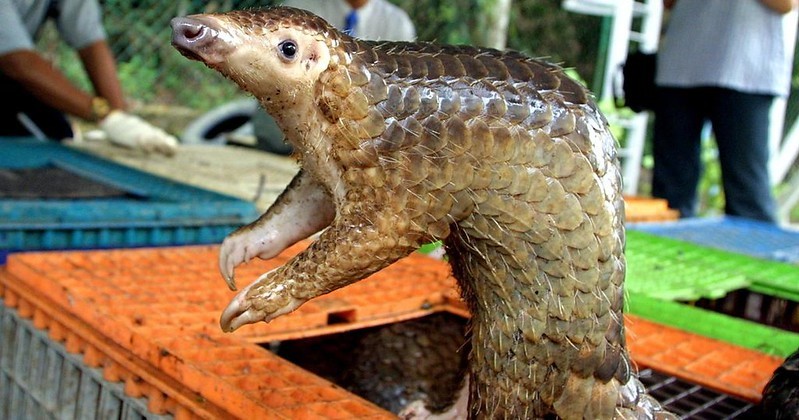
Scientists have not found evidence that COVID-19 jumped from pangolins to humans, although they do host comparable viruses Pangolins, once doubted as the missing connection between bats and humans in the COVID-19 pandemic's origin.
EchoHealth Alliance president, Peter Daszak recently said that collecting evidence on pangolins seemed suspicious that species portrayed a role in this ongoing pandemic. He also added, there is a "need to keep searching for the original reservoir, possibly, a bat."
In addition, Dr. Daszak explained that the potential intermediary host would possibly be another mammal type that's more extensively trafficked in China's Yunnan-to-Wuhan corridor.
While the trade of pangolins is vast, the EcoHealth Alliance president said that the majority of it is in the animals' scales, dried, from which infections would nearly definitely not persist.
He adds too, that "trade in the highly said endangered species." In a recent paper, Kristian Andersen of Scripps, the writer of recent research containing the other viral infection experts, interpreting some characteristics of the pangolin virus connection was quite more neutral and unbiased.
"In my opinion," he continued, "none of the data" he has seen so far, suggests that pangolins are serving "as an intermediate house," although it does not necessarily mean they were not considered as intermediary host.
Playing Host to Viruses
According to the study, pangolins indeed, portray a role as a host to viruses that are analogous to COVID-19 which causes the infectious illness that's currently sweeping the world. To date, the disease has already infected more than 530,000 and killed over 24,000 people worldwide.
Nevertheless, such infections are not as close to a human virus as the one also known as the RaTG13 which is found in the "Chinese horseshoe bats."
Similarly, none of the said viruses are comparable enough to the virus in humans to specify a direct spillover to a person.
Moreover, there has been, no clear path that has been established between bats and pangolins. More so, it's still probable that could have been a direct connection between bats and humans, though that was the condition with the previous outbreaks of the other coronaviruses such as MERS and SARS.
Relatively, in some reports from studies conducted since the onset of the COVID-19 pandemic which includes a paper that Nature released on Thursday, scientists have illustrated an image with a middle that's missing. In relation to the said study, both pangolins and bats have viruses the same as the COVID-19.
Confusions Brewed
When the research study was posted specifically on BioRxiv, it turned it resulted in some confusion. Relatively, it was not the whole pangolin virus, "only something called the spike protein," almost comparable to the same part of COVID-19 that affects humans.
The said paper evaluated the second batch of Malayan pangolins grabbed from a smuggling operation. In addition, the same study found coronaviruses similar to the ones published previously.
In conclusion, the authors suggested that there should be no trading of pangolins even though there is no evidence that viruses jump directly from them to humans.
Still, researchers said they have the potential of sickening people.
Moreover, a lot of coronaviruses in animals exist, most of which, according to research, do not infect humans. And, even though, knowing how they hump to humans won't impact the course of the present pandemic, such findings can help future studies.
Dr. Andersen added, there are numerous paths the new infection could have taken. He also said that assuming COVID-19 started with a bat infection, "it could have jumped straight to humans" even though it did not take place in the outbreaks of the other coronaviruses like MERS and SARS.
© 2025 ScienceTimes.com All rights reserved. Do not reproduce without permission. The window to the world of Science Times.












